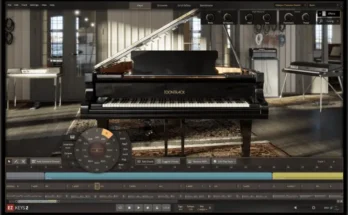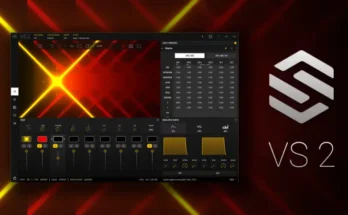Ochen K A-Series 2 v1.0.4
DECiBEL | 26 Mar 2022 | 20 MB
The A-Series Modular Synth is the first fully modular synth for Reason, where you can design your synths however you want for whatever sound you can imagine. And because all the modules are mix-and-match, all those Reason effects and devices that you already have can go right inside your custom synth. The A-Series 2 is the second rack extension in series.
The A-Series Modular Synth is a set of modular synth components to allow you to design your own synth in Reason. The A-Series components aren’t hard-coded together, meaning that the audio and CV signal paths between all the components that make up your synth are completely up to you.
The A-Series 2 is the second of two rack extensions to launch in the A-Series. The other is the A-Series 1. The A-Series 2 contains a poly splitter, a sample and hold, a noise generator, a VCF, a ring modular, and a mixer. The A-Series 1 contains a midi-to-CV converter, a VCO, an envelope generator, a VCA, and an LFO.
Modules:
The A-Series 2 rack extension contains the following modules:
A-19POLY – A polyphonic to monophonic splitter allowing for the creation of polyphonic synths. The A-19POLY supports up to eight voices, each with independent gate and CV data, and three note assign modes: lowest first, sequential (round robin), and random.
A-14SH – A sample and hold module allowing the sampling of CV data and holding that sample constant until a new sample period is triggered.
A-11NOISE – An audio noise generator and a random CV generator. The audio noise generator can generate white noise, pink noise, brown noise, and any blend in between. Each parameter can be controlled by CV input.
A-12VCF – A voltage controlled filter with a four-poll high-pass and low-pass filter, a band-pass filter when used in combination, and CV control over each frequency cutoff.
A-11RM – A ring modulator taking two audio signals and modulating them to produce a single audio result.
A-13MIXER – A six channel mixer with six audio ins and one master audio out. The level of each in and out can be controlled by CV signals.




